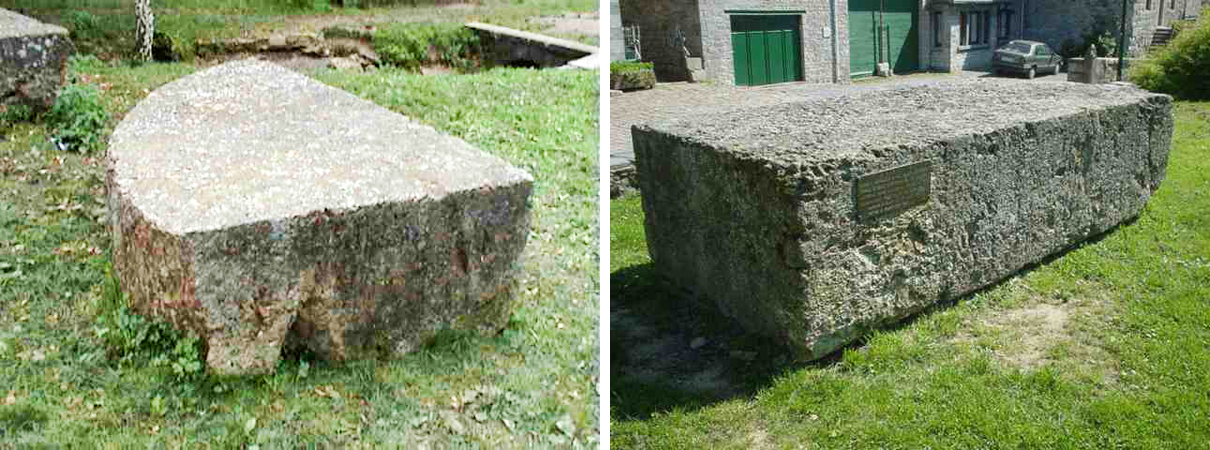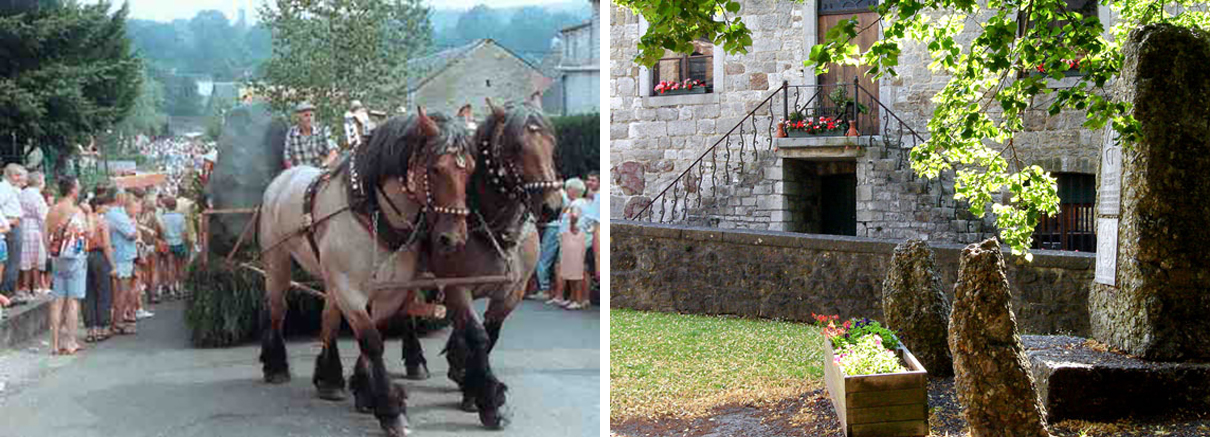Puddingstone of Wéris
The megaliths of Wéris, both dolmens and menhirs, are slabs of a local rock called puddingstone. If you inspect this rock closely, you will see many small pebbles set in concrete or cement. In fact it is a type of natural concrete popularly known as puddingstone: a sandstone conglomerate formed millions of years ago of dark and pale quartzite pebbles held together in a hard mass of sand from the beach of a prehistoric sea.
The top of a hillside, east of Wéris, is formed from this conglomerate bedrock, popularly known as Puddingstone of Wéris. Natural actions of the earth over millions of years - earthquakes, erosions - caused cracks to develop in this rock layer, and some boulders were dislodged and slipped away from the bedrock. Some 5000 years ago the local inhabitants figured out that these boulders were perfect building materials so they selected various pieces, dragged them to specific locations and erected them as menhirs or used them to construct megalithic graves. The House of Megaliths museum in Wéris has a scale model showing a possibility of how such rock transport was accomplished.

The Puddingstone of Wéris is very hard, a conglomerate that is difficult to cut and work and it is this hardness that gives the megaliths their extreme durability, resisting the passage of time and the depredation of man. The local buildings of Wéris were built with less durable stone such as sandstone and limestone.
Between 1866 and the beginning of the First World War the Puddingstone of Wéris was quarried and hewn into rectangular or hemispherical blocks. These were transported by road, pulled on heavy carts by teams of between 10 and 14 horses to the railway station in Barvaux sur Ourthe, whence they travelled by train to Liège or the French Lorraine where they were used as the refractory linings of blast furnaces.
This part of the regional industrial history was described by Joseph Bernard in “Exploitation des carrières de poudingues de la Plate à Wéris”. “Exploitation of the Puddingstone Quarries from the Plate of Wéris” in an article published in the quarterly magazine “Terre de Durbuy” number 29 - (March 1989).

Behind the church lies La Pierre d’août – (The Stone of August), which is a testimony in stone of the first “Fête de la Pierre” – (Feast of the Stone) which took place on the 1st August 1982 ; an attraction which brought many visitors to Wéris.







